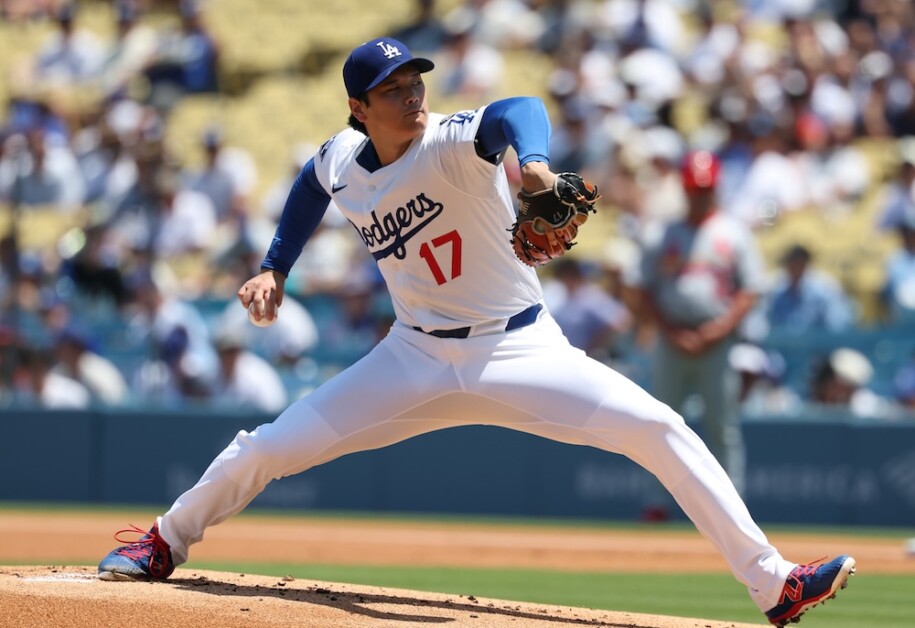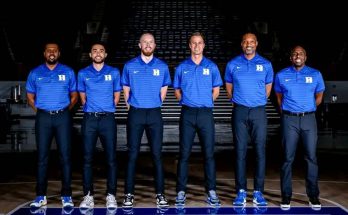Shohei Ohtani took the mound once again for the Los Angeles Dodgers, stepping into the spotlight with the kind of presence that has become almost mythic in the world of baseball. After a brief layoff due to a minor right-hip cramp, the Dodgers’ two-way superstar was back, ready to make his mark with both his pitching and hitting. The game plan was simple but ambitious: Ohtani was to pitch up to four innings, pushing past his previous limits for the season while carefully managing his workload. The Dodgers coaching staff, including Manager Dave Roberts, expressed confidence in Ohtani’s health and mechanics, trusting that his recent rest and routine practice had prepared him well. What followed was a masterclass in dominance, showcasing why Ohtani remains one of the most electrifying players in the game today.
From the very first pitch, Ohtani demonstrated that he had not lost a step. His fastball was blazing, regularly clocking in at the upper 90s, and even touching 101.1 miles per hour on one occasion during the third inning. That kind of velocity not only overwhelms hitters but also sets the tone for his pitching arsenal, which includes a sharp slider and a deceptive splitter. Throughout the four innings, he threw a total of 54 pitches, the most he had thrown in any outing this season, and his performance was marked by surgical precision and unrelenting intensity.
His ability to generate strikeouts was on full display. Ohtani fanned eight batters in those four innings—setting a season-high for both strikeouts and innings pitched. The crowd at Dodger Stadium was electrified, especially as each strikeout piled up, signaling Ohtani’s control and command over the opposing Cardinals lineup. The first inning set the stage: Ohtani struck out the side, including a 99.7 mph fastball that froze Alec Burleson looking. It was a statement pitch and a clear message that Ohtani was locked in. The rhythm he found on the mound was almost hypnotic, as he retired batters in order and with efficiency.
Defensively, the Dodgers supported Ohtani’s effort with solid plays. Early in the game, outfielders like Alex Call and Andy Pages made highlight-reel catches, robbing Cardinals hitters of extra-base hits and maintaining the Dodgers’ momentum. However, the game wasn’t without its challenges. In the third inning, a pop-up drop allowed Jordan Walker to reach base, and a well-placed bunt from Brendan Donovan brought the Cardinals their lone run against Ohtani. Despite this, Ohtani’s composure never wavered. He responded by striking out the side in the fourth inning, putting an emphatic end to his outing and showing that his focus remained razor-sharp until the very last pitch.
But Ohtani’s impact wasn’t limited to the mound. After his pitching performance, he came up to bat in a critical moment when the Dodgers were trailing 1-0. The stadium buzzed with anticipation, knowing that their two-way ace had already done so much. And Ohtani delivered once again, sending a towering 440-foot home run deep into left field. The ball left his bat with an incredible exit velocity of 109.5 miles per hour—a testament to his extraordinary power. This wasn’t just another home run; it was a milestone moment, marking Ohtani’s 1,000th career Major League hit. The significance was clear: he joined an elite group of players, becoming only the third Japanese-born athlete to reach this landmark, alongside legends Ichiro Suzuki and Hideki Matsui.
Ohtani’s home run electrified the crowd and shifted the momentum of the game. His effortless bat flip and measured jog around the bases exuded the calm confidence of a player who knows his place in baseball history. For the Dodgers, this was a moment of pure magic—an embodiment of everything their star player represents: relentless work ethic, rare talent, and a bridge between pitching and hitting prowess that few have ever achieved. At that moment, Ohtani wasn’t just a player; he was a symbol of the game’s evolving possibilities.
Statistically, the night reinforced Ohtani’s dominance on both sides of the ball. He now had 25 strikeouts across 19 innings pitched this season, boasting a remarkable earned run average just above 2.30 and a strikeout rate that ranks among the best in the league. Offensively, his numbers were just as impressive. He led the National League in weighted runs created plus (wRC+), slugging percentage, and runs scored, while sitting just shy of the league lead in home runs with 39. It was the kind of balanced excellence that fuels conversations about him being one of the greatest two-way players the sport has ever seen.
Yet, despite Ohtani’s heroics, the Dodgers were unable to secure the win that night. The Cardinals mounted a late rally, taking advantage of critical moments in the late innings. A clutch single by Jordan Walker tied the game in the eighth, and a defensive miscue by Dodgers rookie Alex Freeland allowed the go-ahead run to cross in the ninth. The Cardinals ultimately held on to a 5-3 victory, stealing the series in a hard-fought contest. For all the brilliance Ohtani displayed, the outcome reminded everyone that baseball remains a team sport, where individual achievements are part of a larger story.
Still, the narrative of that game—and of Ohtani’s season—belonged to him. His eight strikeouts and milestone home run in the same game were rare feats. He became just the 17th Dodgers pitcher in the modern era to record such a combination, underscoring the uniqueness of his talents. More than the numbers or the milestones, what stood out was the seamless way he blends power and finesse, pitching and hitting, strategy and instinct. Watching Ohtani on the field is like witnessing the embodiment of baseball’s greatest dreams—a player who can dismantle lineups one inning and then light up the scoreboard the next.
The cultural impact of Ohtani’s performances cannot be overstated. For a generation of fans in Japan and around the world, he represents a new chapter in the global reach of Major League Baseball. His achievements resonate far beyond the borders of Los Angeles or even the United States, inspiring countless young players who see in him a reflection of what is possible with talent, determination, and dedication. Every pitch he throws and every swing he takes echoes through the hearts of fans who crave moments of transcendent excellence.
At the same time, Ohtani’s career serves as a bridge between eras. In an age increasingly dominated by specialization, where pitchers rarely hit and position players seldom pitch, Ohtani’s two-way success is a throwback to the days of Babe Ruth, when one player could dominate a game in multiple ways. Yet Ohtani’s achievements are also thoroughly modern, blending cutting-edge training methods, biomechanical advances, and a globalized approach to the game. In this sense, he is both a historical anomaly and a symbol of baseball’s future.
The Dodgers, a storied franchise with a rich history of greatness, have embraced Ohtani as a cornerstone of their current and future ambitions. His blend of talent, work ethic, and star power makes him invaluable, not just for his production on the field but for the energy and excitement he brings to the clubhouse and the fanbase. His performance on that night, with eight strikeouts and a milestone home run, is the kind of game that will be remembered for years—one that encapsulates why so many people around the world have fallen in love with Shohei Ohtani.
As the season progresses, all eyes remain on Ohtani. The physical demands of being a two-way player are immense, and the Dodgers are keenly aware of the need to balance his contributions with his health and longevity. But if that game was any indication, Ohtani’s combination of talent, resilience, and heart will continue to push the boundaries of what is possible. Whether he’s on the mound mowing down hitters with high-velocity fastballs and devastating offspeed pitches, or stepping into the batter’s box to launch mammoth home runs, Ohtani remains one of the most compelling stories in all of sports.
In the grand tapestry of the 2025 Major League Baseball season, Shohei Ohtani’s performance that day will stand out as a defining moment—a vivid reminder of the beauty and drama of the game. Four innings, eight strikeouts, a historic home run, and a milestone hit all in one outing. It was a reminder that baseball is not just a game of numbers and statistics, but a stage where legends are born and dreams are realized. For Ohtani, it was another chapter in a story that continues to captivate the world, a story still being written with every pitch he throws and every swing he takes.



